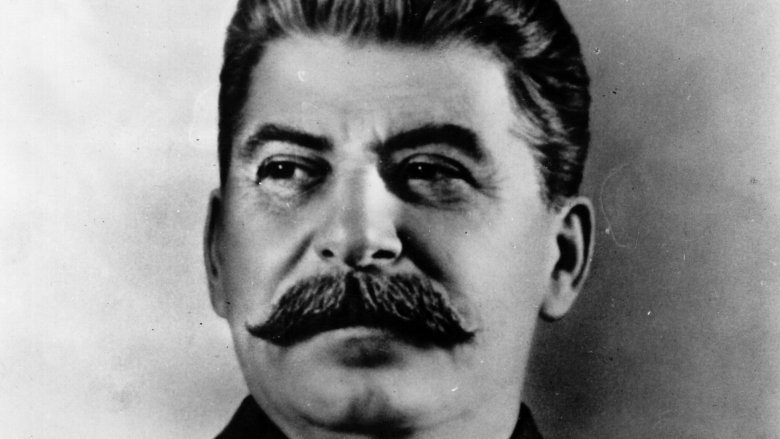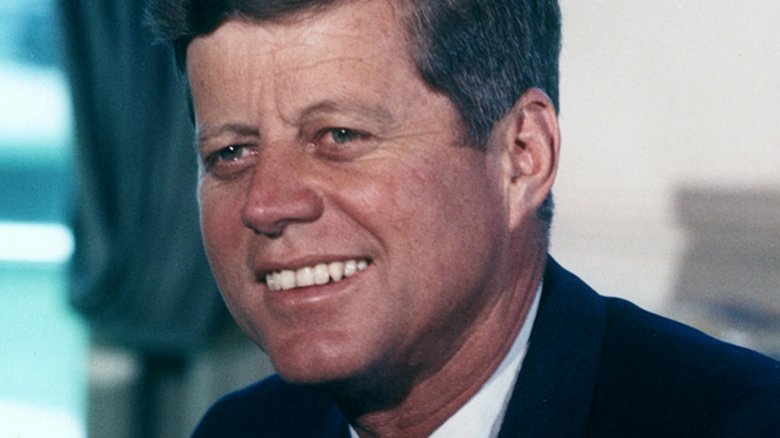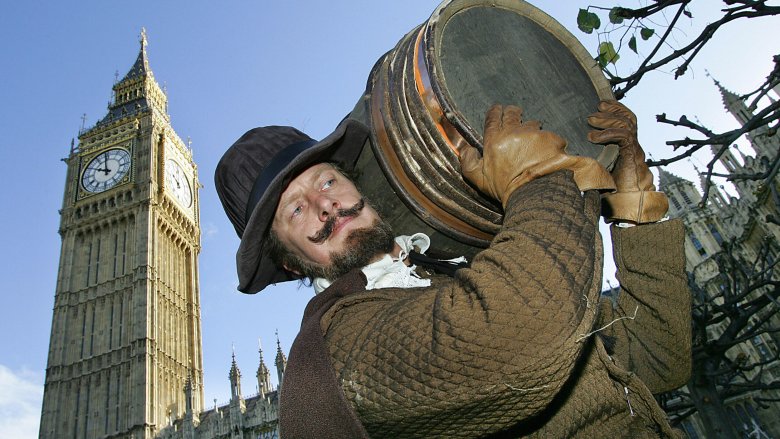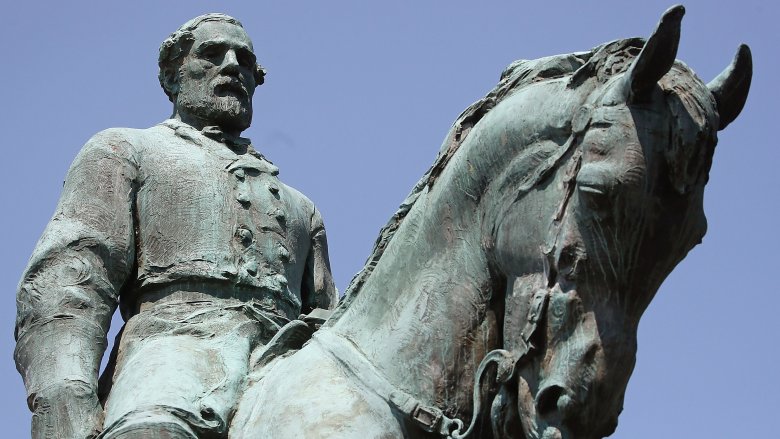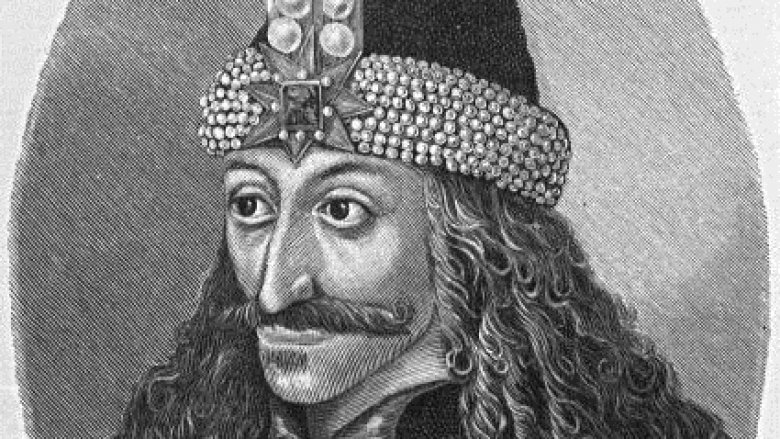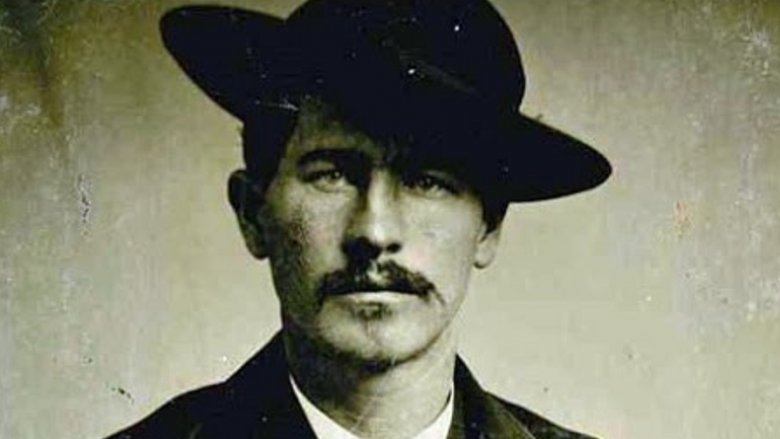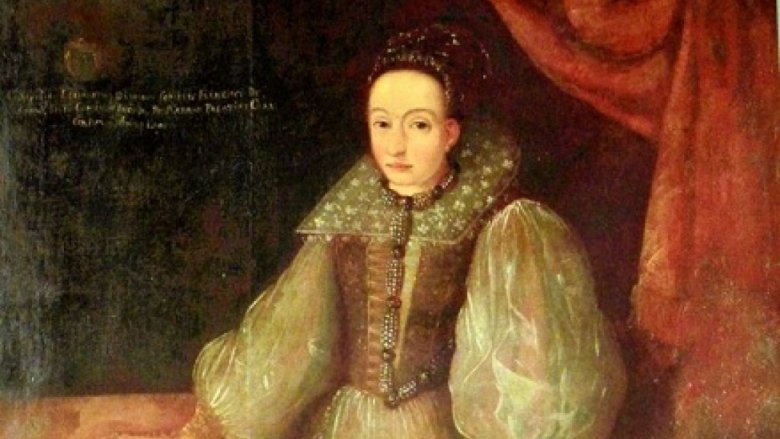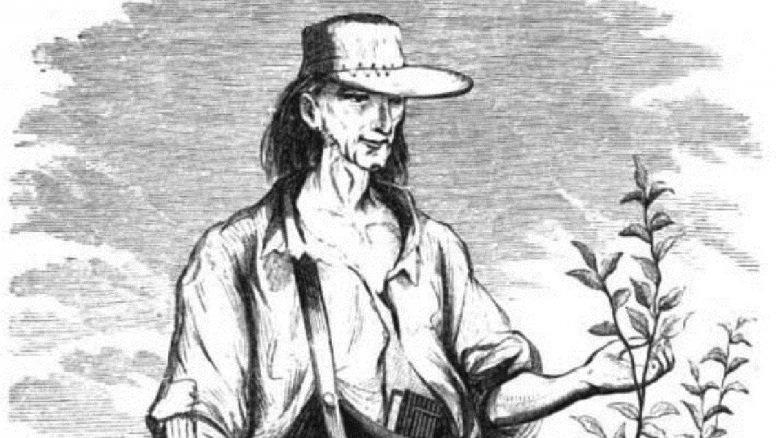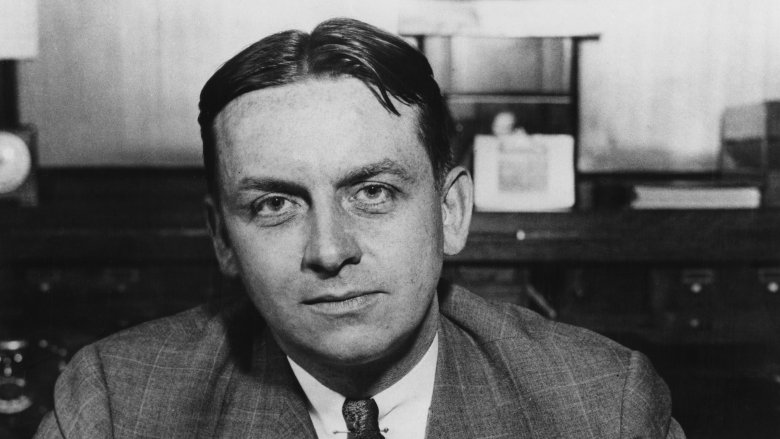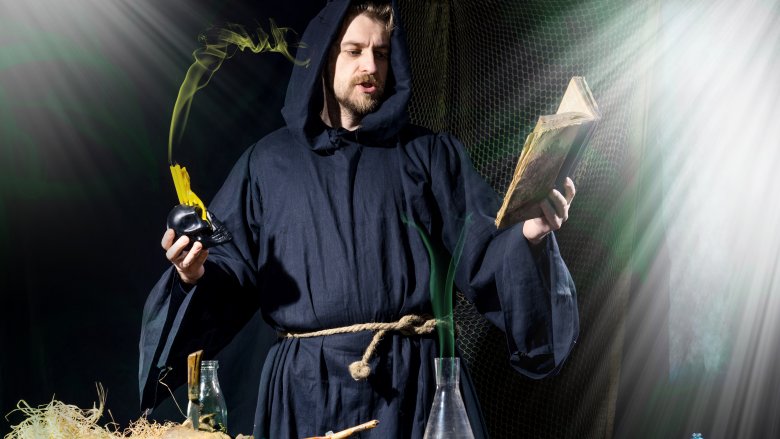Surprising Facts About Famous Historical Figures
Humans are natural-born storytellers who fit almost everything into a narrative and then stuff it with neatly defined characters and symbolism. When a dude walking down the street picks his nose, he isn't just clearing his nostrils the icky way. He's betraying his deeply slovenly nature and lack of social awareness. His dislodged booger, meanwhile, becomes a middle finger to sidewalk decorum. When someone falls in love, it's not just the oxytocin talking. It's the satisfying end to a search for one's true soulmate, at least until the next, definitely truer soulmate comes along.
History is especially susceptible to such mental editing. The past provides beginnings, middles, endings, and deep lessons to be learned. The good guys are great, the bad guys get hate, and most remaining details disappear or get distorted. As it turns out, some of those lost facts tell eye-opening stories in their own right.
JFK needed to use a forklift to board Air Force One
History fondly remembers President John F. Kennedy as a sexy ice cube: smooth, extremely cool, and perfect for when you're feeling hot and bothered. He was the picture of virile vigor, so much so that his looks gave him a decisive advantage over haggard-faced opponent Richard Nixon in a 1960 presidential debate. Adding to his aura of healthy hotness, he famously got it on with Marilyn Monroe, blowing Bill Clinton out of the water in terms of White House infidelity. Sadly, JFK wasn't as A-Okay as he seemed.
Per The Atlantic, the JF-King of Camelot was constantly besieged by colitis, ulcers, and Addison's disease, which together wreaked havoc on his intestines, blood, and back, and then on everything else by extension. He was also wracked by crippling back spasms. In fact, according to The Daily Beast, Kennedy's belligerent back required multiple operations in the 1950s, some of which fell on the wrong side of bungled. During his presidency, his body became so debilitated that he literally needed a modified forklift to get him onto and off of Air Force One.
Kennedy's life was basically several circles of hell rolled into one. He needed a pharmacy's worth of drugs just to kind of function, and even then he could barely tie his own shoes. Simple luxuries like standing or sitting upright entailed the use of a brace. The fact that his speeches weren't endless streams of groans and swear words is a testament to his unearthly perseverance.
Guy Fawkes didn't plan the Gunpowder Plot
Many remember the 5th of November. Didn't Guy Fawkes blow some building to embers? No? Well, then it must have been his protege, old-timey British Natalie Portman, right? Man, that's extra wrong. Okay, time to consult The Telegraph. Huh, it turns out that that in 1605, Fawkes tried to turn King James and the British House of Lords into a giant fireworks display with the help of 36 barrels of gunpowder. To avoid getting his man bits lopped off plus a bunch of other horrid punishments you're better off forgetting, Fawkes leaped to his death. As reward for his treason and attempted regicide, he got a nifty rhyme and an island named after him.
What most don't remember about that November is that Fawkes didn't plan the now-infamous Gunpowder Plot. In fact, he was just one of 13 conspirators who really disliked Protestants. The true brain behind the badness was forgotten villain Explodey McEvilplot, known more accurately as Robert Catesby. Per the BBC, Catesby was a Catholic who tolerated Protestant rule until the death of his Protestant wife. At that point, he went full-on Mr. Freeze and sought to set the government ablaze. Fawkes likely got assigned to figuratively and literally lower the boom due to a background in handling explosives.
People mainly blame Fawkes because he got caught with a bajillion pounds of gunpowder. He was apparently also pretty likable for an attempted mass murderer. King James even commended his would-be assassin's "Roman resolution."
Robert E. Lee was against Civil War monuments
It doesn't take a rocket historian to explain that the U.S. Civil War wasn't civil. Heck, Americans still get uncivil just talking about it. However, for all its barbarity and fratricide, the conflict is often associated with a famously gentlemanly general by the name of Robert E. Lee. As Smithsonian Magazine elaborated, admirers see Lee as a reluctant hero for the pro-slavery South, an honor-bound battler who joined the fray out of duty. (Detractors of Lee think that's bull-duty.) To honor the esteemed general, many U.S. states have erected stately monuments, historical second-place trophies, so to speak, because even losers should get trophies.
These contentious icons have broken the bonds of friendly affection, beckoning the bitter angels of man's nature. Most notably, plans to remove a Lee monument in Charlottesville, Virginia, were met with protests and deadly violence in August 2017. However, if Lee had his way back in the day, that statue wouldn't have existed in the first place.
Generally speaking, General Lee seemed to think monuments to civil conflict perpetuated civil conflict. When invited to help commemorate the Battle of Gettysburg with "enduring memorials of granite" in 1869, the general genteelly pooped on the idea. After declining the invite for unrelated reasons, Lee pointedly added, "I think it wiser, moreover, not to keep open the sores of war but to follow the examples of those nations who endeavored to obliterate the marks of civil strife, to commit to oblivion the feelings engendered." Historical irony knows no bounds.
There's no real evidence that Vlad Dracula drank blood
You've no doubt heard of Vlad the Impaler. He impaled people. You might also know him as Vlad Dracula, the 15th-century Romanian prince who draculed his enemies and inspired Bram Stoker's vampire count. During his shockingly short two-month reign, Vlad the bad (not officially one of his monikers) purportedly mounted warring boyars and anyone else who challenged his rule on gigantic spikes, dipped his bread in their dripping blood, and ate it. Clearly, he had never heard of tomato soup.
Despite Vlad's reputation for posh cannibalism, there are no reliable accounts of him actually imbibing body wine. In fact, as Live Science revealed, there aren't even any unreliable accounts of his blood-drinking. The now-entrenched image of Vlad as a vampiric impaler came from the 1972 book In Search of Dracula, in which historians Radu Florescu and Raymond McNally reference a 15th-century German poem as evidence. However, Canadian professor Elizabeth Miller has politely impugned their position. Specifically, she argued that their translation of the poem was woefully wrong.
Per Miller's reading, the text actually claims Vlad had the hygienically questionable habit of washing his hands in his victims' blood before dinner. (Does that mean he technically invented dragon's blood soap?) But even that account could be poppycock. Most descriptions of Vlad come from his adversaries, who made him sound like the second-coming of Satan. It's entirely possible that the loathed blood-muncher was simply the target of an exceedingly successful smear campaign.
Joseph Stalin wrote flowery poems about flowers
To FDR, he was "Uncle Joe." To Hitler he was a bad winter cold. To Russia, he was the Grim Reaper with a bushy mustache. Joseph Stalin, a man whose favorite language was murder, stopped at nothing to maintain power. During his 30-year dictatorship, he caused somewhere between 20 million and 60 million deaths, according to IB Times. Peasants, pals, puppies –- everyone was a potential target.
That same voracious killer also wrote flowery poems as a teen. Here's an example courtesy of The Telegraph: "The pinkish bud has opened / Rushing to the pale-blue violet / And, stirred by a little breeze / The lily of the valley has bent over the grass." That's stirringly breezy for a budding man of steel. But per The Guardian, it was nothing unusual for pre-homicidal Stalin.
As a boy of steel, he would send friends poems in lieu of letters. At 17, he got his overdone odes published in a high-profile journal with the help of a Georgian prince. Georgian schoolchildren would study those works for decades. Shockingly, this wasn't under threat of execution. Stalin was just that good.
Even as he morphed into the patron saint of gulags, Stalin remained insufferably sappy about poetry. As a bank-robbing Bolshevik, he allegedly recited poems to his accomplices during getaways. And at the terrifying height of his power, Stalin often showed mercy to poets, as if somewhere in his hollow chest beat the semblance of a heart.
St. Patrick might not have been a slave
Fans of ancient Irish saints know St. Patrick as a noble Roman who got kidnapped and carted off to Ireland as a slave around 400 A.D. As CNN summarized, Patrick got loose and joined the clergy. Some allege that the ultra-pious priest exorcised the snakes from Ireland, which would have required time travel so he could introduce them there in the first place. More believably, he converted a guy to Catholicism by comparing a shamrock — which is a plant, which makes it a sham rock — to Jesus, Jesus's daddy, and a ghost.
Patrick's purported path to salvation has raised some scholarly eyebrows. Specifically, Cambridge University historian Dr. Roy Flechner has suggested that the prisoner-turned-priest was never actually kidnapped. Flechner delved into Patrick's personal writings and noticed that multiple people accused the sultan of shamrocks of willfully moving to Ireland in search of wealth. Fletcher found this account compelling on account of Patrick's pre-priest life as a Roman noble in Britain.
Flechner noted that familial obligations would have condemned Patrick to life as a tax collector. In addition to being the boringest job that ever bored, it would have required him use his own dough to cover revenue shortfalls. Furthermore, Romans were about to be driven out of Britain like Irish snakes, making it intensely tempting to flee. Given his family's reliance on forced servitude, it's also plausible that Patrick sold slaves to pay his way to Ireland, which hadn't yet discovered money. That's way less impressive than being a time-traveling snake-vanquisher.
Wyatt Earp was a thief and a con man
What's not to admire about Wyatt Earp? From his epic showdown at the OK Corral to the colorful way he threatened to shoot men in the face, he's renowned for bringing bullet-based justice to the Wild West. Sure, it sounds brutal, but lawless times call for lethal measures, and Earp was always very measured in his fierceness –- at least according to Earp himself. But according to The Daily Beast, everyone's favorite 19th-century lawman omitted some things from his official memoirs, like his less-than-lawful habit of swindling people.
As it turned out, the Arizona sheriff had a criminal past ... and a criminal future. In fact, if Earp were alive today, he'd likely have a criminal present. As a youngster, he cut his crooked teeth as a horse thief and connoisseur of prostitutes. He later got himself kicked out of a Texas town for passing off a painted rock as gold and trying to sell it.
Incorrigibly corrupt, Earp only became a cop because it was stupidly easy to be a dishonest one. As the book Arizona Gunfighters described, during his illustrious days as a Dodge City policeman, he and colleague Bat Masterson were branded "the fighting pimps" because they loved hired love so much. In 1896, 15 years after his gunfight at the OK Corral, he helped rig a major championship boxing match. At a grandfatherly 63 years old, Earp got caught cheating people at cards. You'd hope he'd arrest himself, but the LAPD had to do it.
Elizabeth Bathory's bloodbaths were most likely made up
In 1610, the Hungarian countess Elizabeth Bathory was imprisoned for her unspeakably heinous hygiene. The issue wasn't how often Bathory bathed, but what she allegedly bathed in. Specifically, she soaked herself in the blood of 650 female servants that she tortured to death and sometimes turned into sausages. Supposedly, Bathory believed that her ungodly cleanliness would keep her young and smooth like a baby's everything. (Science clearly wasn't her strong suit.) To top it all off, the crimson countess purportedly diddled men's jiggly-wigglies in a most unladylike fashion.
According to Vice, if the countess' reported kill count is correct, it makes her the all-time queen of killers (as opposed to a killer queen). However, British linguist Tony Thorne pointed out some fatal flaws in history's depiction of Bathory. For starters, the first mention of Bathory's blood baths didn't appear until 100 years after she died, and its author had an obvious agenda. In an article for The Telegraph, Thorne similarly asserted that many of the messed-up tales about the countess emerged long after anyone could have witnessed them.
Seen in context, Bathory's bloody legacy might be a malicious lie. As a widow and uncharacteristically powerful woman, she had no shortage of haters who wanted to depose her. In fact, the supposed witnesses to her crimes were all people who would've held higher status had Bathory not been in charge. (Unluckily for them, they all got executed after her trial.)
Johnny Appleseed's apples were for alcohol
If John "Johnny Appleseed" Chapman were alive today, he'd be a child's worst Halloween nightmare, the straight-laced neighbor who hands out nothing but fruit. The portrait of him in most people's heads was painted by Disney, which would have you believe that Chapman was a shoeless do-gooder with a bizarrely wholesome fetish for planting apple trees. A one-man orchard-maker, he spent the 1800s keeping many a doctor away by painting America red with delicious plant ovaries. But examining Chapman the myth and Chapman the chap is like comparing apples to orange schnapps.
As Smithsonian Magazine pointed out, Chapman's fruits weren't for chewing but for chugging, specifically in hard cider form. That's right; Johnny Appleseed grew booze orchards. Oddly enough, it was for religious reasons. Chapman belonged to the Swedenborgian Church, which sadly had nothing to do with meatballs or chef's hats. It did, however, forbid him from using horticultural methods like grafting, which homogenizes fruit. As a result, he literally walked around with sacks of apple seeds that bore largely inedible fruit. Chapman had no choice but to turn to alcohol.
Funnily enough, in Appleseed's day, hard cider was one of the healthiest things you could drink on the American frontier. Pervasive bacteria often made consuming H2O a no-no. Booze didn't have that problem. That was probably a plus for Chapman, who sold his orchards to arriving settlers. In short, Johnny Appleseed was a businessman who also saved lives one wrecked liver at a time.
Eliot Ness became an alcoholic
Quick, what two things do the Loch Ness monster and Eliot Ness have in common? If you answered, "Ness and Ness," then congratulations, you were half right but you were still wrong. The correct answers were "Ness" and "fictitious existences." To clarify, Eliot Ness wasn't an imaginary in the same way as the mythical water beast, but he certainly didn't exist in the way most people imagine.
People know Ness as the courageous cop who opposed the Prohibition Era's baddest of baddies, Al Capone. Heralded for his unimpeachable integrity, he became the basis for Dick Tracy, a beloved comic book detective that the ATF characterized as an emblem of "crime-fighting and heroism." While it's true that Ness swatted away bribes like gadflies, his role in catching Capone was greatly exaggerated. More jarringly, he and his team of Untouchables didn't prohibit themselves from touching alcohol. As The Independent described, "Ness and his agents, hardly saints, boozed it up as much as anybody."
Later in life Ness's illicit affair with drinking mutated into a full-blown addiction. According to Kenneth Tucker's book Eliot Ness and the Untouchables, contemporaries portrayed him as "the barfly hustling for drinks by claiming that he had lost his wallet." In a depressing Depression Era twist, the celebrated crime-buster also got busted for drunk driving. However, Tucker didn't provide this grim depiction to disparage a hero, but to remind us that –- like all of history's larger-than-life figures –- the untouchable Ness "indeed was human."
Alchemists were actually darned good scientists
Alchemists: history's dumbest smart people. You know them as the simpletons with silly attire who tinkered with tinctures and meddled with metals, crapping out ridiculous ideas like the laughable buttheads they were. Seriously, turning lead into gold? That's got to be the nincompoopiest notion ever. Or it was until scientists proved that it's totally possible.
As Scientific American outlined, back in 1980, researchers at California's Lawrence Berkeley National Laboratory had gotten a particle accelerator to make out with a lead-like substance called bismuth. One thing led to another, and eventually the scientists birthed an infinitesimal quantity of gold. You might feel tempted to reply, "So what? A broken clock is right twice a day. Alchemists were only right once in a millennium, and only by accident." But alchemists didn't just pull things out of their aforementioned buttheads. As Johns Hopkins University chemist and science historian Lawrence Principe explained, more often than not they "were amazingly good experimentalists."
Moreover, some frighteningly formidable minds have drawn substantial inspiration from alchemy, including renowned apple magnet Sir Isaac Newton and gas master Robert Boyle. Newton credited the proto-science with helping him unlock the secrets of light, per Smithsonian Magazine. And Lawrence Principe practically accused Boyle of plagiarizing a German alchemist. That's a pretty stellar track record for a discipline seen as a historical laughingstock.
